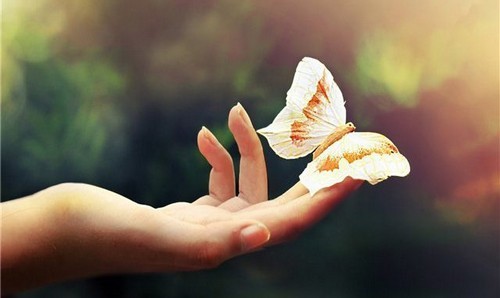With good flexibility, one is able to carry out various movements on a large scale or amplitude. Flexibility depends on the condition of your joints and spine, i.e. how they are mobile.
In the absence of special training, with age, joint flexibility is lost. Some scientists believe that flexibility is the measure of the age of the person.
But age can “cheat” and keep flexibility until old age, if you regularly exercise. We offer you to check and you your flexibility.
1 Test for flexibility:
Try to do a little workout, and then perform the following exercises, if possible, so flexibility in your order.
- 1) while Standing, bend forward and down and touch the floor with your palms, knees not bend.
- 2) Sitting on the floor, bend forward and touch the forehead knees.
- 3) Stand with your back to the wall at 25-30 cm from it, raise your hands and try to touch the tassels of the wall, the lower back does not SAG.
- 4) Standing to perform foot moves forward and upward to head level, then to the side and back, raising the foot above waist level.
- 5) Do a bridge with straight legs and hands.
If some of these exercises you can’t do it, then you need a workout to develop flexibility.
2 Test for flexibility:
Perform these exercise tests and find out how flexible you are.
- 1. Sit on the floor, feet together and socks to plant 30 cm apart. Stretch the body forward, legs straight. Clasp your hands the soles of the feet without straining. If it works – please rate + (plus). If only managed to touch the floor at knee level – – rate – (minus).
- 2. Stand up straight. Right hand to get back on top, left – bottom. Try to join hands. Managed to snap the fingers in the lock + (plus), touch back – (minus).
- 3. Sit down, widely spread his legs. Lean forward and press chest to floor + (plus). Can’t touch the breast sex – (minus).
- 4. To stand in the doorway, a face-to-jamb, holding onto it with his hands, feet shoulder width apart. Sit down, spreading his knees. If you were able to squat, and heel pressed to the floor + (plus), set out shallow heel and tore from the floor (minus).
- 5. Lie on your back, left foot on floor and right leg lift up, pull hands to chest, fingers pointing to the face. If you were able to pull the leg close to the chest and the foot bent at a right angle, put a + (plus). If you bend your knee and can’t bend your foot – (minus).
Grade a + (plus) means you are flexible and your muscles protected from accidental sprains and pain. The more pluses you score, the better.

Rating – (minus) means: need to develop an exercise that failed to perform. Include it in your daily exercises and you regain the lost flexibility.
The development of flexibility of the hip joints. Exercises:
These exercises will help restore mobility and flexibility of the hip joints.
- 1. Bend your right leg in front and left leg straight pull back. To perform a springy squats, leg at the back not to bend 8 times. Then make the turn and continue the exercise, squatting on the left leg. Repeat 30-40 times. For greater effect, in front of leg put on the chair.
- 2. Standing, bend the leg and three hands to pull knee to chest. Repeat each leg 6-8 times.
- 3. Standing, to perform the leg swings forward-back-side 6-8 times each leg.
- 4. Sitting or lying on the back, if he puts his hands back. Turn each leg to perform the movement forward, up 8-10 times.
- 5. Standing, left leg lift to the back of the chair. Springy to bend 4 times, first raised his left leg, and then 4 times to the supporting right foot. Then put your right foot on the chair and perform the exercise. Make each leg from 12 to 16 slopes. Legs do not bend.
- 6. Side-lying, sitting or standing. Perform a circular motion foot with large scale, first in one direction and then the other. Repeat for 12-16 times for each leg.
- 7. Lie on stomach, bend the legs, take hold of ankle joints with your hands, trying to divert straight leg. To perform the springy, 6-8 times in a row.
- 8. Standing, pick up a jump rope and gymnastic stick. Bend the leg and not touching the rope or stick to carry it forward, then back. Repeat each leg 6-8 times.
The development of flexibility of the shoulder joints. Exercises:
- 1. Stand up, hands up. Rhythmically to allocate hands back 8 times. Then within 15-20 seconds, relax the muscles of the arms. Repeat 4-6 times.
- 2. Stand up, hands up to the sides. To perform hands large circles, first forward, then back – 10-12 times.
- 3. Stand up, hands up. To perform hands circular motion, as if swimming the crawl – 10-12 times and how when swimming on the back – 10-12 times.
- 4. Stand up, take up folded in half or skipping rope, gymnastic stick, at a distance of 70-80cm between the brushes. Raise the arms up and bring them back, stretching the rope, then return hands to starting position. Try not to bend your hands and keep them as small as possible. Repeat 8-12 times.
- 5. To stand, to bend, to put outstretched hands on the back of a chair. Lean forward, bending as low as possible (back straight). Repeat 8 times.
- 6. To get up. Take your hands behind your back – one on top, one below. Try to your fingers, pull the hand, then change hand position. Repeat 8-12 times.
The development of flexibility of spine. Exercises:
- 1. Stand up straight. Perform 3-4 consecutive springy to tilt forward and down, trying to touch the floor with your palms. Repeat 12-16 times.
- 2. Sit on the floor. Lean forward, trying to touch the forehead knees. Bending rhythmically to perform 8-12 times in a row. Repeat 3-4 times.
- 3. Sit down, lean hands on the floor. Straighten legs, keeping hands on the floor, tilt your head to the knees, and then sit down again. Repeat 8-12 times.
- 4. Lie on your back, elbows on the floor. Bend in the thoracic spine is 8-12 times.
- 5. Lie on your back, legs bent, feet on the floor, hands near your shoulders on the floor. To raise the body and make a bridge to fully straighten the legs and arms. Repeat 6-8 times.
Every day include in your set of exercises 2-3 exercises of these complexes.



